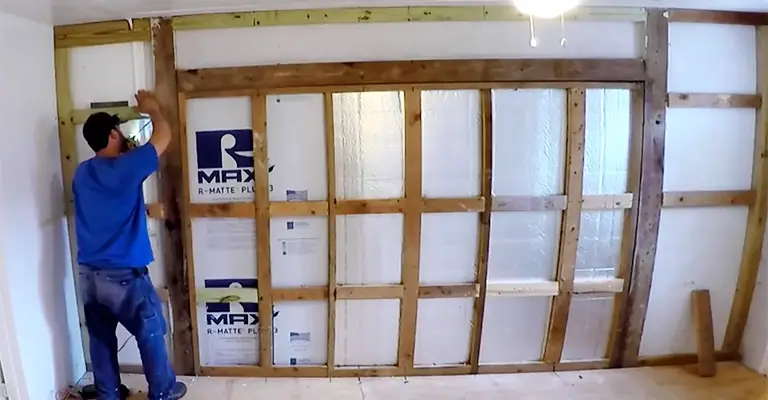If you need an additional room in your home but lack the extra square footage, repurposing your garage might be the perfect solution.
Converting your garage into a functional living space can provide you with a dedicated home office, a guest bedroom, a home gym, or even a cozy entertainment room.
One crucial step in this transformation process is appropriately sealing the garage door to ensure a comfortable and well-insulated room.
In this guide, we will explore various methods and tips on effectively sealing a garage door, allowing you to create a seamless transition from garage to room. Let’s get started on transforming your garage into a versatile and inviting space!
The best way to seal your garage door is to replace or add the bottom door seal and weatherstripping on the jambs along the sides and top.
To make the door as airtight as possible, you may also need to install thin weatherstripping between the panels.
Different Ways To Seal A Garage Door To Make A Room
Weather-sealing can mostly be accomplished by yourself if your garage door is functioning well. The garage door may require gasket replacement, adjustment, or repair.
It’s essential that your garage door works and seals properly, so a professional garage door installation company is recommended. Your garage door can be weather sealed in five ways.
1. Garage Door Panel Weatherstripping
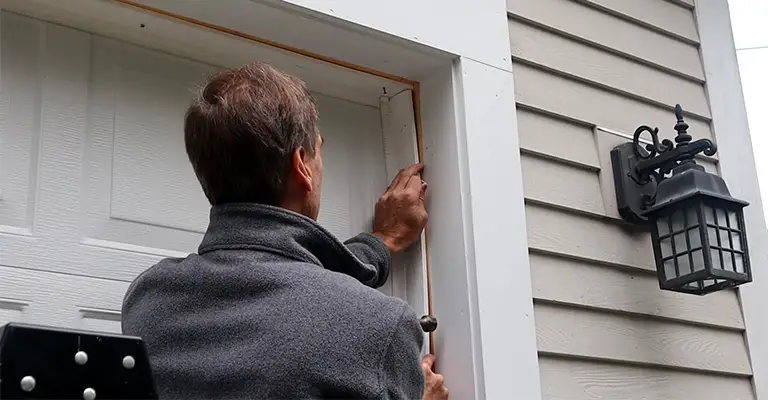
This weatherstripping fills the gaps between individual garage door panels. This will be especially useful if the panel edges are flat on older wood doors with flat panels.
Most metal and fiberglass doors come with interlocking edges preventing air from entering. Weatherstripping for door panels is self-adhesive and sold in rolls.
It simply means sticking it to each panel’s top or bottom edge. Similar to house entry doors, the door’s panels compress the weatherstripping to create an effective seal.
2. Vinyl Door Stop With Integrated Weatherstrip
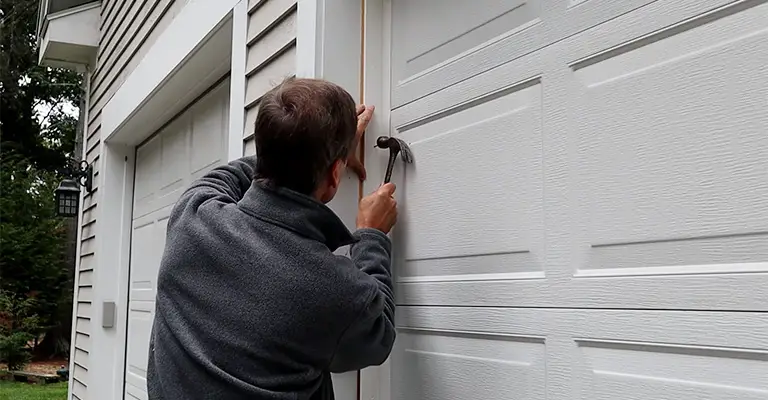
If you need to replace outdated, damaged, or rotted door stops, molding with weatherstripping is a great option.
There are typically two parts to this specialty stop molding, with a wood-look molding strip along with a flexible weather-seal flange. Installation is easy with galvanized or stainless-steel siding nails and cuts easily with a saw.
To install a door stop, position each piece parallel to the door face, push the molding upwards so the weatherstrip flange is compressed against the door face, and fasten the molding in place with nails.
Most commonly, the top molding is installed first; then, the side stops are installed over the ends of the top molding.
3. Garage Door Stop Weatherstripping
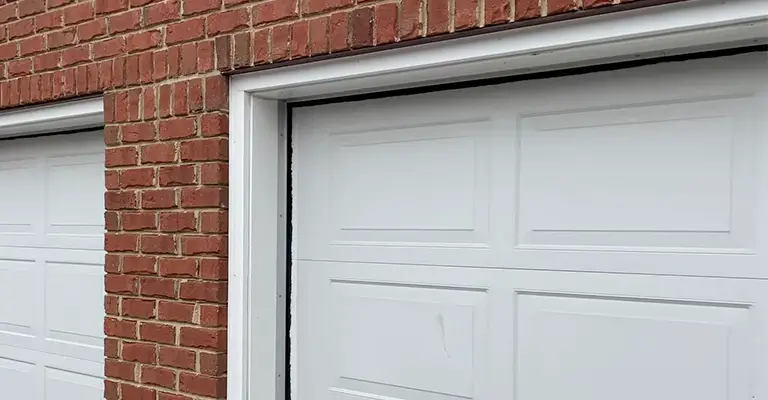
Additionally, wind and rain can enter the garage through the top and sides of the garage door.
Usually, garage doors are equipped with weatherstripping at the base of the jamb and near the front face of the door to prevent this from happening.
You will need to replace your garage door weatherstripping if it doesn’t have it or if it has old, worn weatherstripping that no longer seals.
The new weatherstripping comes in rolls; you can cut it to length easily with a utility knife. The installation is done with galvanized nails or screws. If your weatherstripping creates a good seal, the flange should press against the door.
4. Garage Door Threshold Seal
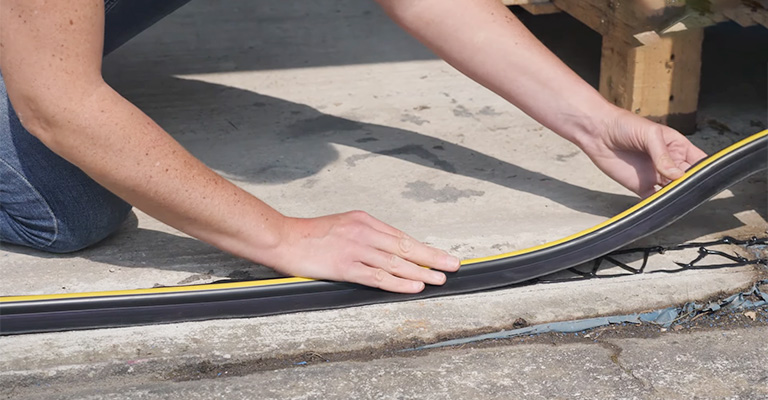
Unlike the bottom seal on a garage door, threshold seals are attached to the garage floor rather than the door itself. There are many threshold options, such as using them alone or in conjunction with door seals.
When a driveway slopes down toward the garage, thresholds are often used to prevent surface water from entering. They can also fill a large gap under a door.
The threshold seal can last longer than the door seal if it is made of high-quality vinyl. The threshold is generally installed with an adhesive included with it.
Remember that thresholds prevented water from being sucked into a garage and sucked out.
It may be inconvenient to hose your garage down if you like to do so. Moreover, thresholds make it difficult to sweep dirt and debris from garages.
5. Garage Door Bottom Seal
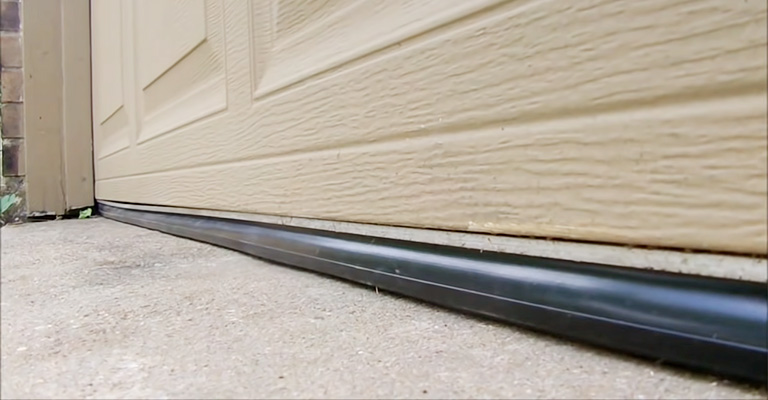
The garage door bottom seal (also known as the door sweep) consists of a long strip of rubber or vinyl attached at the bottom to protect the bottom edge of the garage door.
Upon closing the door, the flexible material compresses, sealing the gap along the floor, preventing water, dirt, breezes, and pests from entering.
If the bottom seal is worn out and daylight is visible below the bottom of the door when closed, it’s time to replace it. Getting your door wet might lead to a draft or seeing water outside.
In general, wood garage doors have simple strips with angled edges that seal against the door and the floor. It is typical to install them with galvanized roofing nails or aluminum roofing nails.
Garage doors made of metal usually have an aluminum channel on the bottom that holds a U-shaped rubber gasket, sometimes referred to as an astragal seal. Installation of the gasket is as simple as slipping it into two small tracks on the channel.
Metal gasket channels are also available for installation on a wood garage door, allowing you to use this type of gasket.
They are easy to install and come in various sizes that allow them to seal gaps of various heights. If the garage floor is sunken or cracked, then this can be an easy way to fill large gaps.
Why Should Your Garage Be Weather-Sealed?
Your garage should be weather sealed to protect you and your family from harmful elements such as fierce rain, snow, hail, and wind.
You could damage your garage’s floor if water enters from the outside, freezing and causing ice damage and leakage into your living spaces.
When Should You Replace The Weather Stripping On Your Garage Door?
When your garage door’s weather-stripping cracks, tears, or rips, or if you feel a breeze or dirt encroaching around the door, it may be time to replace it.
How Should Long Weather Stripping On A Garage Door Last?
When it comes to weather stripping for garage doors, quality weather stripping should last for two to three years.
Final Words
It is important to keep your garage secure whether you regularly use it or not. It’s probably attached to your house, and you may even be using it for storage, even if it’s not.
Hence, the tiny gaps around the garage door are a liability in more ways than one. It could end up costing you thousands of dollars unless you learn how to properly seal a garage door.
Workshops, band rehearsal rooms, or entertainment dens are most often located in garages. They’re great places to go if you want to make some noise. They are also sometimes used as quiet hiding places in a noisy house.
However, regardless of how you use your garage, it must be soundproofed as much as possible. Many times, simply sealing the door will greatly improve the acoustics of a room.

